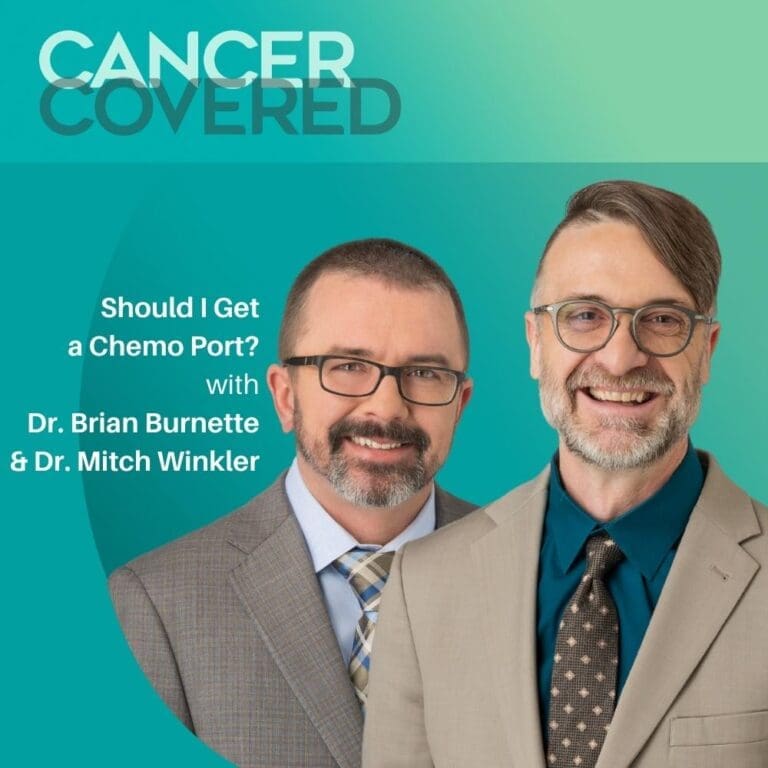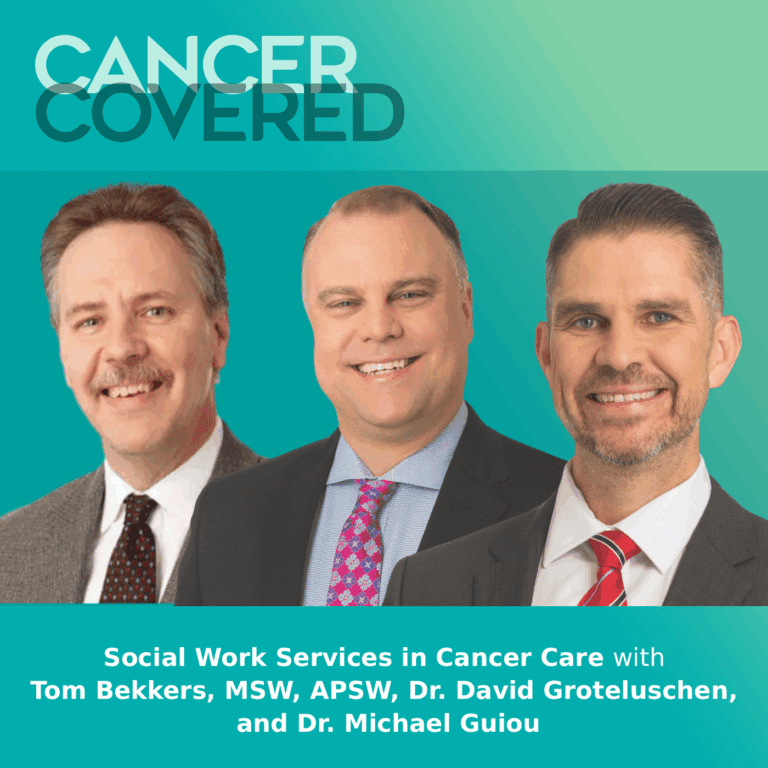Podcast: Play in new window | Download
On today’s episode, we dive into the topic of chemotherapy ports. We discuss what they are, how they work, and why and when they’re used and not used in cancer treatment. Exploring the benefits and potential risks associated with ports and the issues surrounding when they should be removed after treatment, it’s an informative and insightful conversation that sheds light on this often inquired-about important aspect of cancer care.
Dr. Burnette explains the different types of ports, their placement, and the reasons why they are often preferred over other infusion devices. He also addresses common misconceptions about ports and shares his perspective on when and why they should be removed after treatment. Dr. Burnette’s expertise and compassionate approach to patient care make him a trusted authority on the topic of chemotherapy ports.
A native of Upper Michigan, Dr. Burnette completed his internship, residency, and fellowship at the Mayo Clinic after graduating at the top of his class from Michigan State. Most recently, he served as Instructor of Medicine at Mayo. He is well-published and lectures internationally on cancer-related topics. Dr. Burnette treats all cancer types and is excited to serve the people of Green Bay and the surrounding areas.
Born in Little Rock, Arkansas, Dr. Winkler attended Hendrix College in Conway, where he received his B.A. in biology. He attended medical school at the University of Arkansas College of Medicine and completed his internship and residency. He completed his oncology fellowship at the Mayo Clinic in Rochester, Minnesota. He is board-certified in internal medicine, medical oncology, hematology, hospice, and palliative medicine.
“Oftentimes when you bring up a port, the picture a patient or the family member has in their mind is somebody having a dialysis catheter, a long IV hanging out of the arm, and it’s different than that.” ~ Dr. Brian Burnette
Today on Cancer Covered:
- A chemotherapy port is a device inserted under the skin that connects to a large blood vessel in the body, providing secure IV access for medication infusion.
- Ports are different from other devices like PICC lines or Hickman lines.
- While ports are commonly placed in the chest, they can also be placed on other body parts by surgeons or radiologists.
- Ports must be flushed regularly to maintain their function, usually every four to six weeks.
- Ports provide a more pleasant experience for patients with difficulty getting IVs in their arms, as they offer secure and easily accessible IV access.
- Some chemotherapy drugs can be harsh and irritating to the inside of veins, making ports a better option for infusion as they can handle more challenging conditions.
- Ports are not necessary for all patients receiving medications, but they are particularly useful for treatments that require secure IV access or protracted infusions.
- The decision to keep a port in after completing cancer treatment is a personal one, but it is important to consider the psychological burden and potential risks associated with leaving it.
Join Our Free Monthly Support Group
No one should carry the burden of cancer alone. A cancer diagnosis can make you and your loved ones feel isolated and alone – just when you need support the most.
Our social workers at Green Bay Oncology know that meaningful connection brings strength and healing. Sharing the experience in a safe space with others on a similar path is often powerful and therapeutic. That’s why we offer a free monthly virtual and in-person cancer support group facilitated for you and your loved ones.
Wherever you are on your cancer journey – you are always welcome.
To join us, visit: https://gboncology.com/events/
We’ve Got Cancer…Covered.
Thanks for tuning into this week’s Cancer Covered with Green Bay Oncology episode. If you enjoyed this episode, please subscribe and leave a review wherever you get your podcasts.
Apple Podcasts | GooglePlay |Deezer | Spotify | iHeart
Be sure to share your favorite episodes on social media to help us reach more oncology professionals, cancer patients, and their families.
Join us on Facebook, Twitter, Instagram, and LinkedIn. For more exclusive content and information, visit our website.








